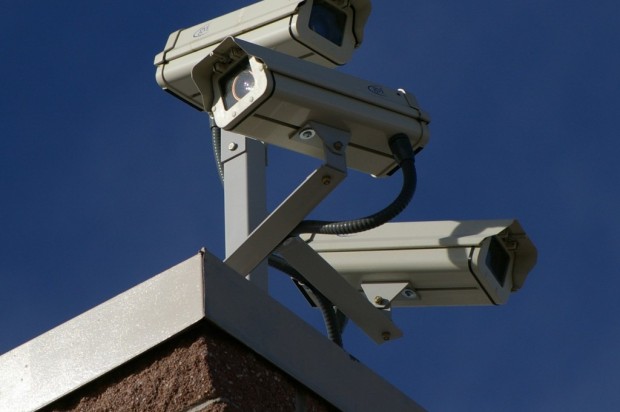
The American Civil Liberties Union and 26 other groups charged in San Francisco today that a government antiterrorist program to collect reports on suspicious activities is targeting innocent minority group members without aiding national security.
“Our everyday offline experience is under just as much surveillance as our online experience has been exposed to be,” said ACLU attorney Linda Lye at a news conference outside the Federal Building.
The groups announced they asked the U.S. Justice Department in a letter today to tighten its standards to require that the suspicious activity reports, or SARs, must be based on a reasonable suspicion of terrorist activities.
“Maintaining SAR programs that create serious privacy and civil liberties violations but have no demonstrable security benefit is unjustifiable,” the letter said.
Lye said the reporting program is separate from the National Security Agency’s surveillance of Americans’ phone and e-mail records, and the ACLU’s investigation of it began months before Edward Snowden started leaking information about the NSA’s online surveillance in May.
The suspicious activity reports are submitted by federal, state and local officers, private security guards and citizens and are collected in regional repositories known as fusion centers.
The nation’s more than 70 centers are run by state and local agencies and partly supported with federal funds provided through the U.S. Department of Homeland Security.
The civil liberties groups today released 1,800 examples of reports collected by two California centers and contended the reports show that surveillance is overly broad and based on ethnic profiling.
One report from Bakersfield on Oct. 6, 2010, said, “Suspicious ME (Middle Eastern) males buy several large pallets of water.”
Another 2010 report noted, “Female subject taking photos of Folsom Post Office.”
That same year, an Elk Grove police sergeant who lives in Lodi reported he “has long been concerned about a residence in his neighborhood occupied by a Middle Eastern male adult physician who is very unfriendly.”
Lye said the ACLU obtained the 1,800 sample reports from the Central California Intelligence Center in Sacramento and Joint Regional Intelligence Center in Los Angeles County, primarily by means of public records act requests.
Bay Area reports are collected at the Northern California Regional Intelligence Center in San Francisco but the civil rights groups have thus far been unable to obtain reports from it, Lye said.
Justice Department Andrew Ames said this evening, “We have no comment” on the groups’ letter.
In addition to the ACLU, organizations signing the letter included the Arab American Institute, Asian Law Caucus, California Council on American-Islamic Relations, Media Alliance, National Lawyers Guild and National Press Photographers Association.
The groups also contended that photographers, including both professionals and tourists, are unfairly targeted and harassed in the reporting program.
One report, for example, related that a person “was reported to be taking photographs of a bridge crossing the American River bike trail” near Folsom Dam on May 11, 2012, the ACLU said.
The Homeland Security Department says on its website that the fusion centers are “focal points” for gathering and sharing threat-related information.
“With timely, accurate information on potential terrorist threats, fusion centers can directly contribute to and inform investigations initiated and conducted by federal entities,” the website says.
An October 2012 bipartisan report by the Permanent Subcommittee on Investigations of the U.S. Senate Committee on Homeland Security and Government Affairs concluded, however, that “the fusion centers often produced irrelevant, useless or inappropriate intelligence reporting to DHS, and many produced no intelligence reporting whatsoever.” ‘
The subcommittee said estimates of federal funds spent to support the centers between 2003 and 2011 ranged from $289 million to $1.4 billion.
It said its review of fusion center reports filed during a 13-month period in 2009 and 2010 “could identify no reporting which uncovered a terrorist threat, nor could it identify a contribution such fusion center reporting made to disrupt an active terrorist plot.”
Julia Cheever, Bay City News









